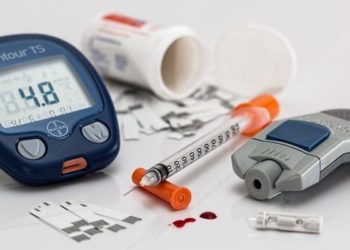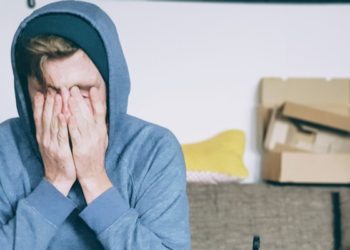Symptom severity is associated with discrepancies between subjective and objective sleep measures in patients with non-seasonal depression
1. This randomized controlled trial found that patients with more severe depressive symptoms exhibited more significant underestimation of total sleep time and discordance between diary-based and actigraphic sleep parameters.
2. However, those who received bright light therapy showed greater improvements in diary-based time to fall asleep and rise time than those in the control group.
Evidence Rating Level: 1 (Excellent)
Depression is a common mental health disorder often associated with sleep disturbances, and those with an eveningness chronotype are particularly susceptible to these effects. Subjective sleep data is obtained from self-reported measures, such as a sleep diary, while polysomnography is used for objective measures of sleep parameters. Prior studies have demonstrated significant discrepancies between subjective and objective sleep measures, which mental health disorders may influence. Furthermore, bright light therapy (BLT) is known to help treat sleep disturbances in non-seasonal depression. This study aimed to investigate the discrepancies between subjective and objective sleep parameters in people with non-seasonal depression and eveningness and evaluate the impact of BLT on these parameters.
This randomized controlled trial included 93 adult patients diagnosed with non-seasonal major depressive disorder. Participants were included if they were aged 18-65, met the diagnostic criteria for major depressive disorder, scored at least 14 on the 17-item Hamilton Depression Score (17-HDS), and scored 41 or less on the Morningness Eveningness Questionnaire, indicating an eveningness chronotype. Participants were excluded if they had seasonal depression, a current substance abuse disorder, significant suicidal risk, a history of light-induced migraine or epilepsy, were on photosensitizing medication, engaged in shift work, or were on any treatments that could interfere with circadian rhythm. Participants were randomized to the treatment group, which received five weeks of 10,000lux BLT for 30 minutes a day, or the control group, which received 50lux dim red light therapy (DRL). Participants completed a daily sleep diary. At weekly follow-ups, patients completed the 17-HDS for depressive symptoms, the Insomnia Severity Index (ISI), and the 36-item Short-form Survey (SF-36) to assess daytime functioning. Participants wore an actiwatch for actigraphic measurements for seven days at baseline and during the last week of treatment. The primary outcomes were the difference in subjective and objective sleep measurements and the impact of BLT on these findings.
The results demonstrated that patients with more severe depressive symptoms had more significant discrepancies between diary-based and actigraphic measures of total sleep time. Those who received BLT exhibited improvements in subjective time to fall asleep and rise time compared to the DRL group. However, both groups demonstrated comparable improvements in other subjective measures of sleep, including wake after sleep onset, total sleep time, and sleep efficiency. Furthermore, the two groups exhibited no significant difference in actigraphic sleep measures following treatment. However, the study was limited by looking exclusively at patients with eveningness chronotype, which limited the generalizability of the findings to other patients with major depressive disorder. Nonetheless, the present study demonstrated that symptom severity in depression is associated with discrepancies in subjective and objective sleep measures.
Click to read the study in Sleep Medicine
Image: PD
©2023 2 Minute Medicine, Inc. All rights reserved. No works may be reproduced without expressed written consent from 2 Minute Medicine, Inc. Inquire about licensing here. No article should be construed as medical advice and is not intended as such by the authors or by 2 Minute Medicine, Inc.







